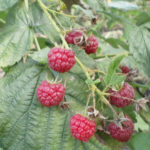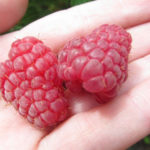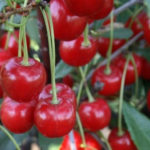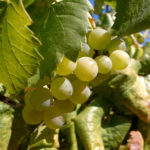Strawberry variety Vima Tarda
Vima Tarda is a mid-late non-renovated variety of garden strawberries (strawberries) for dessert purposes. Bred in the Netherlands by Vissers Aardbeiplanten B.V. Belongs to the Vima family - a group of Dutch varieties that have proven themselves very well both in production areas and in private plots. Among the brightest representatives of this line stand out V. Xima, V. Rina, W. Kimberley, and V. Zanta, which is one of the parental forms of our heroine. The second "parent" was the popular Vicoda... Vima Tarda inherited the best characteristics from her ancestors, but among the entire Vima family it is still not the most famous. This strawberry clearly deserves more attention, as it has all the necessary qualities to please both an ordinary summer resident and a farmer-entrepreneur.
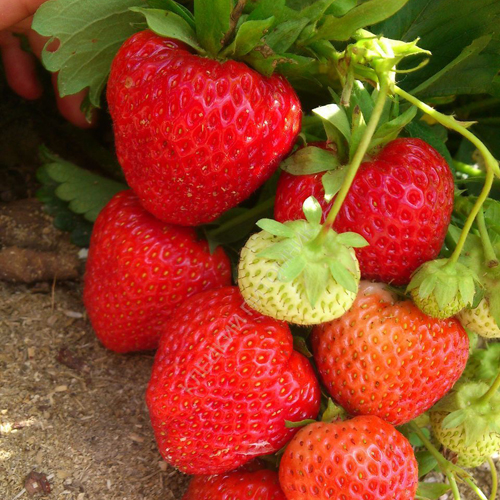
The plant is powerful, medium-sized, abundantly leafy. The formation is scarce. The leaves are large, wide, dark green in color with a glossy sheen. The flowers are bisexual, white. Peduncles are short, strong, located at the level of leaves or below, under the weight of the fruit they are laid on the ground. Vima Tarda forms a large number of peduncles, on which, in turn, quite a lot of berries are tied, which ensures good productivity. Strawberry fruits are hidden under the foliage, which protects them from the scorching sun, but this small nuance makes the harvest a little longer.
The berries of the variety are large and very large, blunt-conical in shape, the largest specimens can be comb-shaped or fan-shaped. In general, our heroine does not differ in uniformity of forms - chiseled fruits, as for selection, should not be expected. The skin of the berry is strong, dark red, shiny. Achenes are small, yellow, can acquire a red tint, are immersed in the pulp shallowly. The flesh itself is very dense, dark red in color, with a wonderful strawberry aroma. Despite the fact that Vima Tarda belongs to the hard-fruited varieties, this moment does not spoil the great taste of strawberries in any way.
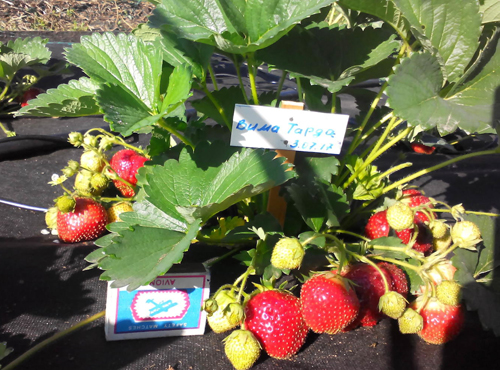
The fruits have a multifaceted sweet taste with a useful subtle sourness, which only emphasizes the sweetness. However, like other varieties from the Vima family, our heroine does not always receive positive reviews about her taste. So, some admire them, others estimate them as mediocre, and some even think that the berries are tasteless, "foamy". Well, everyone has different preferences. And by the way, agricultural technology and climatic conditions of the region affect the quality of the taste of the fruits, but more on that later. It is also worth mentioning that among the group of varieties of "Vima" our heroine is considered one of the most delicious.
Berries are versatile in use, excellent fresh, excellent for any kind of processing. But the main area where Vima Tarda is more popular is the preparation of desserts. Decorating cakes, pies and other culinary delights is where our heroine shows herself best. Also, its berries are ideal for freezing and canning whole fruits.

The variety really differs in the large size of the fruits, their average weight per season is 30-40 grams, during the first harvest, specimens weighing more than 50 grams are often observed. The berries remain large throughout the season, even at the very last harvest you will not find small things on the bushes. Strawberries are characterized by stable, extended fruiting, which lasts about a month, ripening in the first half of July. In general, in different climatic conditions, our heroine matures at different times, and it is not entirely correct to call her late, as many sources do. In its homeland, for example, Vima Tarda can start the season along with mid-season or mid-late varieties, about 7 days later. Elsants and almost at the same time as Florence... And, according to gardeners, in the conditions of the Central zone of Russia, this strawberry certainly cannot be considered late - it blooms at the same time as the mid-season, bears fruit a little later. Thus, it would be more correct to classify the variety as a mid-late variety in order to avoid false hopes - it is quite suitable for extending the berry turnover, when the early varieties have almost finished fruiting, but to get a really late harvest, it is better to plant another strawberry, for example Malvina, one of the late maturing on the current market.

Our heroine is high-yielding, from one plant, with moderate agricultural technology, it is possible to get about 600-800 grams of berries, with an intensive one - more than 1 kg. However, it should be said that such indicators are not achievable in all regions. According to numerous reviews of gardeners, Vima Tarda is really a "sissy" and may simply not take root on the site, or she will lead a miserable existence without revealing her full potential for productivity. Thus, we can say the following: the variety will show impressive yield results only in the most comfortable climatic conditions for it, otherwise it may prove itself worse than the less productive varieties.
Strawberries have excellent immunity, are rarely affected by various diseases, but this does not mean that the plants do not need preventive treatments, especially when it comes to commercial cultivation. You should also pay attention to the protection of plantings from strawberry mites - according to gardeners' reviews, Vima Tarda is very attractive for this pest. Our heroine is quite winter-hardy, provided a good shelter hibernates quite well, but without it there is a high probability of attacks. The same applies to frost resistance. In general, the variety is Dutch, so mild climatic conditions are more familiar to it, without excessively high or low temperatures. Its drought resistance and heat resistance are not bad, but the lack of moisture has a bad effect on the yield, and the berries tend to bake in the sun.
In agricultural technology, strawberries are quite standard, they only require timely and high-quality basic care measures. The variety is commercial, so there is one simple rule for growing it - the more attention you pay to the plants, the better the result can be expected. Particular emphasis should be placed on protecting plantings from the negative effects of the external environment - shading and abundant watering in hot seasons, enhanced prevention of fungal diseases in rainy seasons. In general, Vima Tarda shows excellent results when grown indoors, this can become especially relevant for residents of regions with a very cold climate.
Another main point of agricultural technology is regular feeding. Strawberries bear fruit abundantly, moreover, they have large berries, so they need sufficient nutrition to be able to "feed" the crop. Do not skimp on fertilizers, organic matter should be applied to the soil before planting and until flowering, then you need to give preference to mineral complexes. Foliar dressing is also relevant, and in order to achieve the highest results, it is advisable to use growth stimulants. The variety can be classified as an intensive type, so the better you feed it, the more harvest it will bring. Another agrotechnical nuance is that strawberries form very few whiskers, which, of course, is convenient when leaving, however, problems may arise with reproduction, so it is advisable to separate the plantings. In one area, the plants are not allowed to bear fruit, plucking flowers, and in the other, they are not allowed to waste energy on reproduction by removing the whiskers.
Also, do not forget about the timely rejuvenation of the plantings.Foreign sources indicate that Vima Tarda can bear fruit well for quite a long time. But long does not mean infinite. Depending on the intensity of use, the planting material should be renewed after 3-5 years. In general, commercial high-yielding varieties usually do not withstand more than two years of cultivation, greatly reduce the yield in the third year of life, but how things are with our heroine is a rather complicated question that is not covered in horticultural forums. In general, it is necessary to rejuvenate the plantation as needed, but this event is clearly not worth neglecting - this will only lead to disappointment due to the decreased strawberry yield.
What can be said at the end. Vima Tarda is a very bright representative of her family, clearly deserving attention, not inferior in her characteristics to the popular favorites of the strawberry market. It is famous for its large-fruited and high yield, decent taste and marketability of berries, as well as excellent immunity. But she also has enough disadvantages, especially for gardeners in many regions of Russia - this is the poor adaptability of plants to an unusual climate for them, and a rather noticeable whimsy in care, and the dependence of productivity on the weather conditions of the season. Of course, as they say, we have not seen such sissies, but one reasonable question arises - is it worth indulging the whims of a Dutch woman when it is quite possible to find a less demanding alternative to her? On the other hand, maybe on your site this strawberry will take root perfectly and will delight you, who knows. It is clearly worth trying to grow this variety, only the price of seedlings is currently biting. And by the way, be very careful when buying planting material, as there is a high probability of falsification of seedlings, and your Vima Tarda may turn out to be some completely unknown "rootless" specimen.

